-
BackX
-
Components
-
-
Category
-
Semiconductors
- Diodes
- Thyristors
-
Electro-insulated Modules
- Electro-insulated Modules | VISHAY (IR)
- Electro-insulated Modules | INFINEON (EUPEC)
- Electro-insulated Modules | Semikron
- Electro-insulated Modules | POWEREX
- Electro-insulated Modules | IXYS
- Electro-insulated Modules | POSEICO
- Electro-insulated Modules | ABB
- Electro-insulated Modules | TECHSEM
- Go to the subcategory
- Bridge Rectifiers
-
Transistors
- Transistors | GeneSiC
- SiC MOSFET Modules | Mitsubishi
- SiC MOSFET Modules | STARPOWER
- Module SiC MOSFET ABB’s
- IGBT Modules | MITSUBISHI
- Transistor Modules | MITSUBISHI
- MOSFET Modules | MITSUBISHI
- Transistor Modules | ABB
- IGBT Modules | POWEREX
- IGBT Modules | INFINEON (EUPEC)
- Silicon Carbide (SiC) semiconductor elements
- Go to the subcategory
- Gate Drivers
- Power Blocks
- Go to the subcategory
- Electrical Transducers
-
Passive components (capacitors, resistors, fuses, filters)
- Resistors
-
Fuses
- Miniature Fuses for electronic circuits - ABC & AGC Series
- Tubular Fast-acting Fuses
- Time-delay Fuse Links with GL/GG & AM characteristics
- Ultrafast Fuse Links
- Fast-acting Fuses (British & American standard)
- Fast-acting Fuses (European standard)
- Traction Fuses
- High-voltage Fuse Links
- Go to the subcategory
- Capacitors
- EMI Filters
- Supercapacitors
- Power surge protection
- TEMPEST emission revealing filters
- Go to the subcategory
-
Relays and Contactors
- Relays and Contactors - Theory
- 3-Phase AC Semiconductor Relays
- DC Semiconductor Relays
- Controllers, Control Systems and Accessories
- Soft Starters and Reversible Relays
- Electromechanical Relays
- Contactors
- Rotary Switches
-
Single-Phase AC Semiconductor Relays
- AC ONE PHASE RELAYS 1 series| D2425 | D2450
- One phase semiconductor AC relays CWA and CWD series
- One phase semiconductor AC relays CMRA and CMRD series
- One phase semiconductor AC relays - PS series
- Double and quadruple semiconductor AC relays - D24 D, TD24 Q, H12D48 D series
- One phase semiconductor relays - gn series
- Ckr series single phase solid state relays
- One phase AC semiconductor relays for DIN bus - ERDA I ERAA series
- 150A AC single phase relays
- Rail Mountable Solid State Relays With Integrated Heat Sink - ENDA, ERDA1 / ERAA1 series
- Go to the subcategory
- Single-Phase AC Semiconductor Relays for PCBs
- Interface Relays
- Go to the subcategory
- Cores and Other Inductive Components
- Heatsinks, Varistors, Thermal Protection
- Fans
- Air Conditioning, Accessories for Electrical Cabinets, Coolers
-
Batteries, Chargers, Buffer Power Supplies and Inverters
- Batteries, Chargers - Theoretical Description
- Modular Li-ion Battery Building Blocks, Custom Batteries, BMS
- Batteries
- Battery Chargers and Accessories
- Uninterruptible Power Supply and Buffer Power Supplies
- Inverters and Photovoltaic Equipments
- Energy storage
- Fuel cells
- Lithium-ion batteries
- Go to the subcategory
-
Automatics
- Futaba Drone Parts
- Limit Switches, Microswitches
- Sensors, Transducers
-
Infrared Thermometers (Pyrometers)
- IR-TE Series - Water-proof Palm-sized Radiation Thermometer
- IR-TA Series - Handheld Type Radiation Thermometer
- IR-H Series - Handheld Type Radiation Thermometer
- IR-BA Series - High-speed Compact Radiation Thermometer
- IR-FA Series - Fiber Optic Radiation Thermometer
- IR-BZ Series - Compact Infrared Thermometers
- Go to the subcategory
- Counters, Time Relays, Panel Meters
- Industrial Protection Devices
- Light and Sound Signalling
- Thermographic Camera
- LED Displays
- Control Equipments
- Go to the subcategory
-
Cables, Litz wires, Conduits, Flexible connections
- Wires
- Cable feedthroughs and couplers
- Litz wires
- Cables for extreme applications
- Sleevings
-
Braids
- Flat Braids
- Round Braids
- Very Flexible Flat Braids
- Very Flexible Round Braids
- Cylindrical Cooper Braids
- Cylindrical Cooper Braids and Sleevings
- Flexible Earthing Connections
- Galvanized and Stainless Steel Cylindrical Braids
- PCV Insulated Copper Braids (temp. up to 85C)
- Flat Aluminium Braids
- Junction Set - Braids and Tubes
- Go to the subcategory
- Traction Equipment
- Cable Terminals
- Flexible Insulated Busbars
- Flexible Multilayer Busbars
- Cable Duct Systems
- Go to the subcategory
- View all categories
-
Semiconductors
-
-
- Suppliers
-
Applications
- CNC Machine Tools
- DC and AC Drives (Inverters)
- Energetics
- Energy bank
- Equipment and Components for Hazardous Areas [Ex]
- Equipment for Distribution, Control and Telecommunications Cabinets
- HVAC Automation
- Induction Heating
- Industrial Automation
- Industrial Protective Devices
- Machines for Drying and Wood Processing
- Machines for Thermoforming Plastics
- Mining, Metallurgy and Foundry
- Motors and Transformers
- Power Supplies (UPS) and Rectifier Systems
- Printing
- Temperature Measurement and Regulation
- Test and Laboratory Measurements
- Tram and Railway Traction
- Welding Machines
-
Assembly
-
-
Inductors
-
-
Induction devices
-
-
Service
-
- Contact
- Zobacz wszystkie kategorie
Wireless communication

Technological development in the whole history has never been progressing as quickly - practically every area of our life has been transformed in the last several decades and is continuously going through evolution, with which we most often can’t keep up, and also usually don’t notice it because all these changes naturally become a part of our lives.
Wireless communication is rapidly replacing cable technology and becoming a basic method of communication in daily life, production workshops, services and commercial sectors.
How does wireless communication (Wi-Fi) work?
Wireless communication technology, also called Wi-Fi, is currently one of the most popular connection methods. This type of technology transfers data not through a cable, but through electromagnetic waves such as radio waves, infrared light or satellite signals. This method, although it can do the same tasks as cable communication, provides extra mobility, simplicity of usage and saving time and money while installing the system. Wireless communication is also especially useful in emergency situations or in remote work.
Wireless communication allows for:
- data transmission in distance of several (e.g. TV remote control) to numerous thousands of km (e.g. radio communication;
- application in mobile phones (3G/4G), wireless internet, smart homes (e.g. door lock, opening garage), GPS, headphones, etc.;
- application in communication systems between vehicles (V2V), identification systems with sensors and radio identification (RFID), and also in air and sea transport.
Types of wireless networks
There are special standards of using wireless communication, and is divided into four categories:
- Wireless Personal Area Network, WPAN,
- Wireless Local Area Network, WLAN,
- Wireless Metropolitan Area Network, WMAN,
- Wireless Wide Area Network, WWAN.
Application of wireless technology
Mobile technology
Mobile network technology is called WWAN - providing connectivity on huge distances of cities and countries. Mobile phones use satellite systems such as: 2G; Long Term Evolution (LTE); GSM, CDMA 2000, CDPD and Mobitex.
Third generation systems (3G) are so-called Universal Mobile Telecommunication System (UMTS) - allow for access to the internet, data, multimedia, etc. There is also generation 3.5 and 3.75, including High Speed Downlink Packet Access (HSDPA) and High Speed Uplink Packet Access (HSUPA) - HSDPA allows for 2 Mb/s data download speed, and HSUPA 1,45 Mb/s.
Fourth generation (4G) provides broadband connection with the internet e.g. thanks to wireless modems. The speed of data download reaches from 100 Mb/s to 1 Gb/s, and sending to 60 Mb/s.
NFC (Near Field Communication)
Current NFC devices are commonly used in contactless payments and social media (for sharing contacts, pictures, videos and files). Near Field Communication (NFC) is short distance connection technology, which allows for communication between devices after direct contact. NFC works with a frequency of 13,56 MHz and provides data transmission up to 424 kb/s at a distance of about 10 cm. This type of technology is present in modern models of smartphones, tablets and other devices, and provides safety after contacting proper devices with each other and which are able to use this type of communication.
RFID technology
Radio identification (RFID) is short-distance, automatic and contactless, which uses radio electromagnetic fields to receive and read information of a given object from data saved on an identifier. RFID technology is commonly used for following and identifying resources and devices though an antenna. RFID range is from 1 to 12 meters, and speed of 640 kb/s.
Bluetooth
Bluetooth's connection uses WPAN technology - wireless transfer of data for short distances. This type of technology for years has been commonly used in mobile phones, headphones, computers, laptops, GPS, and car radios. Bluetooth uses a radio system and is intended for short-distance connection.
Zigbee technology
It is a wireless network with small power, intended for sending data of low speed and short distance. It is usually used in small digital radio transmitters in home automatics, sensors, medical devices, control systems e.g. light systems and home safety measures, etc. There is also a ZigBee version - ZigBee PRO protocol, which provides additional possibilities e.g. roads, jumps in network, maximum number of devices and network safety.
Z-Wave (WPAN) technology
It is a wireless technology working in radio frequencies - guarantees the possibility of controlling home automatics through a smartphone and managing communication between smart devices e.g. light control, locks and thermostats.
Wi-Fi (WLAN)
It is a local wireless network technology, using radio waves. Provides fast internet connection and access to it from any location e.g. public places, private institutions, homes, etc. Wi-Fi allows for connecting to the network to many devices at the same time, such as computers, phones, printers. It can be easily configured or extended through extra radio Wi-Fi cards for other devices. Benefits of Wi-Fi are lack of cables, lower costs and mobility.
LoRa (LPWAN) and Sigfox (LPWAN) technology
LoRa is a protocol of LoRaWAN - it provides long-distance connection and can be used in the creation of LoT. It is a wireless technology of transferring data with small speed for big distances - most often used in industrial sectors, research and medical fields, to provide big range communication between remote sensors connected to the network. LoRa is especially useful for smart measurements, monitoring inventory, vending machines, and automotive.
Sigfox technology is similar to LoRa, but it’s closed network. Sigfox is a wireless connection with a low power intake, also used in IoT.
World without wireless communication - why can't we live without it?
Today, almost all of us have a phone, radio, TV or tablet and on a daily basis uses multimedia and services available thanks to the wireless connection to the Internet. Each day millions of voicemails, videos, photos, data and more are sent from device to device or shared online.
Due to the rapidly increasing need for wireless connection, wireless communication systems are still developing, and today we can distinguish at least several dozens of their types, including:
- TV and radio,
- Satelity communication,
- Radars,
- Mobile networks,
- GPS (Global Positioning System),
- Infrared light,
- WLAN (Wi-Fi),
- Bluetooth
- Pagers,
- RFID.
Wireless communication irreversibly became a part of our lives - we use it every day for years, but we’re often not aware of it or think about it. Video calls, sending files to the cloud, sharing, social media, online and contactless payments, or recently popular smart home systems became so natural, that we are rarely surprised by anything, and even if we are, it quickly becomes part of our daily lives.
Wireless communication systems provide many benefits, which can be listed for a long time. Some benefits include:
- Cost-saving because of the lack of cables and need for adjusting the surroundings to the wires’ installation.
- Flexibility and convenience - allows for using mobile, easy to use and compact devices in almost any place.
- Speed and reliability of data transfer significantly exceeds cable connection, which additionally is more faulty.
- Access - remote work and education, access to the internet in rural areas.
- Connection continuity allows for immediate replying and informing in an emergency.
There are a few significant disadvantages of wireless communication, such as:
- Network disruptions - there is a possibility of signal disruptions through a signal from another device e.g. Wi-Fi (WLAN) and Bluetooth signal conflict.
- Safety - because data is sent in an open space network, there is a risk that our information and personal data can be acquired by third parties.
- Health effects - too long exposure to any radiation type can cause risk to our health. Although safe levels of radio energy frequency (RF) are not entirely known, it is recommended to avoid exposure to huge radiation and to limit exposure time.
Related products
Related posts
 Now available – DC/DC converters from PREMIUM
Now available – DC/DC converters from PREMIUM
 New release in DACPOL lighting for lathes – Kira covers
New release in DACPOL lighting for lathes – Kira covers




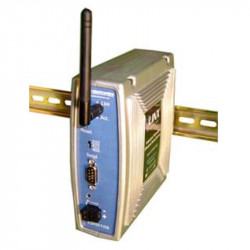
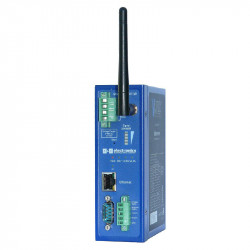
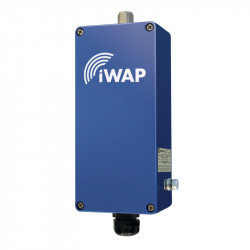
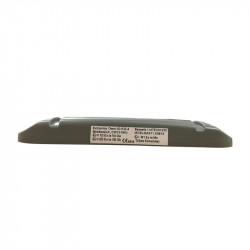
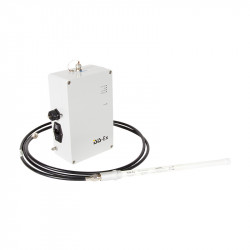
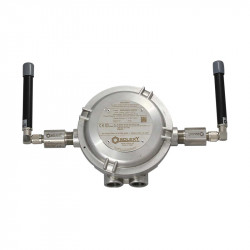
Leave a comment